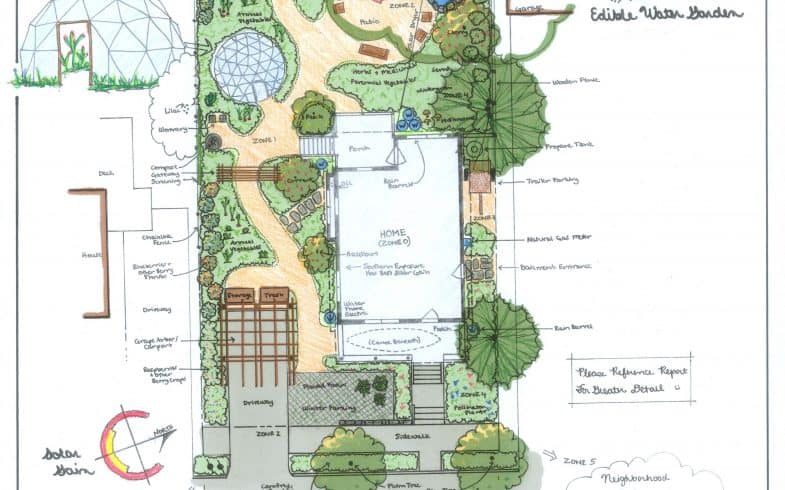Permaculture design
Design Principles
While permaculture has an ethical foundation and a broad and integral vision of sustainability, it does not stop there. Permaculture is a highly practical and concrete philosophy that offers a toolbox of design principles and strategies for creating systems that are regenerative and resilient. These design principles and strategies are most fully articulated in Bill Mollison’s Permaculture – A Designer’s Manual. The design principles provide the how to of the design process and are considered to be guiding tools rather than dogmatic templates.
The design principles and strategies can be applicable to a wide range of domains as demonstrated by the permaculture flower above. For the purpose of this discussion, however, we will consider them primarily for the development of landscapes and outdoor living systems.
SOME OF THE KEY PERMACULTURE DESIGN PRINCIPLES AND STRATEGIES INCLUDE:
PROTRACTED AND THOUGHTFUL OBSERVATION RATHER THAN PROTRACTED AND THOUGHTLESS LABOUR.
Developing a thorough understanding of the design site including its history, topography, functioning ecology, soil conditions, sunlight patterns, movement of water, human engagement in the space, wildlife patterns, etc. is a critical step in preparing to make any changes. Sometimes this is referred to as “sector analysis.” If the site is not properly understood, a variety of errors in the design can occur.
START SMALL. MAKE THE LEAST CHANGE FOR THE GREATEST EFFECT.
The best permaculture designs begin small and are scaled-up after positive affirmation or feedback from the design system itself is received. In practical terms, we need to learn our lessons and make our mistakes on a small scale rather than a large one. This saves time, effort and money. Sometimes a simple intervention or change or will provide greater results than a larger, more expensive one.
OBTAIN A YIELD.
The yields of a system are theoretically unlimited.In technical terms, a yield is any product of the created system that can meet a human or non-human need. Some yields will need to be invested back into the system (i.e. biomass into soil) while others can be enjoyed by the people who are engaged with it. Examples of potential material yields from a system include food, water, energy, medicine, fibre, building materials, biodiversity, soil, bio-mass, etc. while non-material yields may include beauty, learning, wisdom, solitude, recreation, community, income, etc. The nature of nature is that it becomes increasingly productive over time (i.e. cleared land eventually yields a forest), and the yields of a well-designed system will eventually generate a surplus.


No comments.